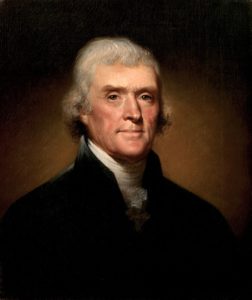
The current conservative populist movement appears to offer some hope of mounting an effective resistance to the corporate state that was established during, and has largely adapted and stayed in power, since the failed War for Southern Independence. While having turned away from the endless wars and being able to effectively mobilize people to resist the political establishment that has controlled both parties, they generally hold to a Straussian or Neo-Conservative historical interpretation and in other respects have some similarities with both the neo-conservatives that arose in the 70’s and 80’s and the “New Right” of the late 50’s and 60’s. Both of these initially had some appeal to the Southerner but ultimately proved to be no friend and in most cases were more of a Trojan horse pointing out the dangers of the old adage, “the enemy of your enemy is your friend”.
Going back to what could be considered the birth of modern conservatism, coming out of World War I a conservative movement started to take shape made up of opponents to intrusive Yankee social legislation and anti-war activists. Prior to that, the party realignments of the Populace Era resulted in two progressive parties that left various groups of conservative voters largely disenfranchised (1). The “Old Right” was generally disillusioned with the political process but saw the Republican Party of the day as being the greater threat to individual liberty due to their consistent history of supporting ever bigger government, government “partnerships” with big business through tariffs, subsidies, and contracts along with militaristic foreign policy. The Republicans were also most closely associated with Prohibition and related progressive Evangelical social engineering projects (1 p. 12). Isolated and treated by the New Dealers as men of the right, they forged an alliance with opponents of the New Deal even though many of these were or had been advocates of cartel capitalism or corporate statism(1 p. 25). In terms of party affiliation, this gradually took the form of western Republicans and Southern Democrats. Even Herbert Hoover, who had done a great deal to pave the way for New Deal corporatism but balked short of fully committing to the level of government control envisioned by Roosevelt, joined the ranks of the Old Right with his anti-New Deal book, Challenge to Liberty in 1934 (2) (1 p. 26).
The entry of the US into World War II represented a low point for the Old Right. They foresaw America being transitioned into a, “Leviathan State, into a domestic totalitarian collectivism, with suppression of civil liberties at home, joined to an unending global imperialism abroad (1 pp. 45-7).“ Charles A. Beard predicted a “perpetual war for perpetual peace” which has largely come to pass (2). Journalist John T. Flynn, who was originally a liberal supporter of the New Deal but observed the danger of “creeping socialism” and became a prominent spokesman for the Old Right (3) wrote As We Go Marching (1942) of the future American state. Comparing National Socialism to the New Deal, he saw an American version of “good fascism” represented in a perpetual corporate state (1 pp. 46-7).
During the campaign of 1944 FDR came up with a plan to remove the pesky Southerners from the Democratic Party. FDR conferred with former Republican presidential candidate Wendell Willkie on a long term plan to reorient American politics. Willkie was a liberal Republican who would not support the 1944 nominee, Thomas Dewey. Roosevelt proposed his vision that all liberals, labor unions, and minorities be gathered into the one party, the Democratic Party, and that the southern conservatives and the western Republicans along with the party bosses “go their errant ways”. To this, Willkie said he was very interested and said to “tell the President” that “I’m ready to devote nearly full time to this” (4 p. 454). Willkie died not long after that but these changes would eventually happen starting in the 60’s as the New Left Democrats would attempt to gather into the Democratic tent minority voters and effectively expel Southern conservatives.
Following the War the liberals displaced the New Deal Progressives and neo-Marxists forming the “Vital Center” which philosophically synthesized the works of Arthur Schlesinger, Reinhold Niebuhr, George Kennan, and others and would define U.S. foreign policy (5 p. 18). The Vital Center would hold through the 50’s when the Progressive and Marxist left would again start to reassert themselves but for that period, they were contained within colleges / universities and labor unions, frequently having to maintain a low profile even there. Meanwhile the Old Right started to reclaim some academic positions and generally became somewhat successful in reaching a broader audience. George J. Stigler and Milton Freidman became prominent lecturers, professors, and writers and became distinguished members of the “Chicago school” of economics. The Volker Company and Volker fund became actively involved in promoting and sponsoring free market economics and specifically funded Von Misses and Hayek (1 pp. 66-67)
The Vital Center benefitted from what came to be known as “corporate liberalism”. This alignment of Wall Street, big business, big government, and unions created a power structure that could only be dislodged by a populist uprising which the ruling coalition could suppress. Instead of demobilizing, as had happened after WWI, The Truman administration maintained a war time mobilization that would be very difficult to displace. The progressive left, including Henry Wallace, had gone along with the Korean venture in the interest of “collective security”. While vital center policies were aggressively implemented by the Truman, frequently without congressional approval, the isolationist Old Right had one more attempt to rise to power.
At the opening of the 1951 Congress, Senators Wherry and Taft submitted resolutions prohibiting the President from sending troops abroad without the approval of Congress, as is defined by the constitution, and further challenged Truman’s refusal to accept a cease fire to negotiate a peace settlement. In 1950 the US suffered a crushing defeat at the hands of the Chinese driving US forces out of North Korea. The “Great Debate” ensued where elder statesmen Herbert Hoover followed by Joseph P. Kennedy (patriarch of the Kennedy family) delivered coordinated back-to-back speeches calling for American evacuation of Korea and an end to the war. Kennedy had been a lifelong isolationist or anti-imperialist, maintaining extremely consistent positions on foreign policy that ran contrary to those of FDR and the Vital Center consensus (1 pp. 95-6). Ultimately, however, this was to be a lost cause. Two other conservative isolationist voices writing during this time were George Morgenstern and Garret Garret (pen name for Edward Peter Garrett who eventually took on the pen name) making arguments that would be very current in the early 21st century. Morgenstern made very direct and repeated references to Yankee progressive evangelicalism, cultural imperialism, and the postmillennial vision of uniting the world in the image of America – the redeemer nation. Another excellent commentary that has stood the test of time was “The Rise of Empire” by Garrett where he observed that we “have crossed the boundary that lies between Republic and Empire” (1 p. 103). Taft was to lose the Republican nomination to Eisenhower. Many felt that Taft was cheated out of the nomination with powerful corporations exerting heavy influence over a large number of uncommitted delegates to support Eisenhower (1 p. 123)
Eisenhower’s election reestablished the dominance of the eastern Republican establishment that has generally controlled the party until the era of Trump. Up until this time, there remained hope of reversing some of the provisions of the New Deal specifically in the area of social legislation and direct payments to individuals but the Republicans accepted the reasoning that the electorate wanted these things and they would just attempt to manage them efficiently. This cemented the fundamental changes in the role of government enacted by the New Dealers as permanent (6 p. 280).
The New Right didn’t banish the Old Right with direct repudiation of the old leaders and ideas but rather gradually took over in an internal revolution. The New Right had three main philosophical components. The first was the mobilization of the government and military for a worldwide crusade against communism. The second was the preservation and support of Christianity against the forces of atheism which were assumed by most to align fairly closely with communism as opposed to liberalism or progressivism. The third and, in practice, the least important and most flexible were market based laissez-faire domestic economic policies. While the Old Right was principally Orthodox Protestant and generally concentrated in the Midwest with a Southern contingent, the makeup of the New Right was significantly different. The New Right included a large contingent of ex-communist journalists and intellectuals along with and the new group of generally younger Catholics.
Bill Buckley became known with his God and Man essay at Yale in 1951 referring to himself as a libertarian. His mentor was Frank Chodorov who was a key figure in the Old Right but that shifted to ex-communist journalist Whittaker Chambers. In another essay, A Young Republicans View in 1952, he said “thus far invincible aggressiveness of the Soviet Union” threatens America to the point where “we have to accept Big Government for the duration—for neither an offensive nor a defensive war can be waged … except through the instrument of a totalitarian bureaucracy within our shore” (7). The logic in this really goes something like, to defeat the enemy, we must become like the enemy. The Dulles’ and the National Review became the statist opposite of the Communists.
Another prominent figure in the New Right who eventually played a critical role in removing ideals of economic and personal liberty from the New Right and the Republican Party was Russell Kirk who wrote The Conservative Mind in 1953. Kirk was far more acceptable to the Vital Center and corporatist Republicans than any remaining figures of the Old Right. He was accepting of big government and domestic statism so long as they were supportive of a Christian framework. Kirk popularized the words “Conservatism” and “New Conservatism” that never had general acceptance by the Old Right. To the youth in the conservative movement during this time period who may have had little knowledge of the Old Right, the perception of the real conflict frequently had little to do with liberty and a great deal to do with the defense of Christian culture against atheism (1 pp. 164-5). At this point the argument has gone full circle back to the Progressive belief that the government can or should be used to define and impose culture.
By the late 50’s Barry Goldwater of Arizona emerged as the political leader of the New Right. There was a Draft Goldwater movement at the 1960 Republican convention intended to get Goldwater a place on the ticket with establishment candidate Richard Nixon having sealed the nomination (8). Many of the Old Right enthusiastically supported the Goldwater candidacy having either adopted the Cold War foreign policies or were at least willing to give up foreign policy in the name of compromise and expediency. In practice, however, the Warfare state cannot exist apart from the Welfare state and the Welfare state in America has always created and sustained the Warfare state. A recurring pattern here is that conservatives, perhaps feeling outnumbered, have tended to enter into destructive alliances.
In the years and decades to come, the establishment Republican and Democratic national candidates would offer little to choose between in foreign policy which essentially became the same, and monetary policy had long since been turned over to “experts” who were decided on by an ever growing federal bureaucracy that acted as a sort of permanent government. There were slight differences in domestic fiscal policy but only in degree. No program that was created was ever discontinued. We effectively had a uniparty system where Right leaning voters had to decide between the “lesser of two evils” and spend their energies scheming how to take over the Republican Party.
In response to the New Left that arose from the universities and other institutions in the 60’s, and their increasing control over the Democratic Party, anti-communist liberals started to leave the party and established neo-conservatism which largely took over the Republican Party. In some respects the neo-conservatives can be hard to distinguish from the New Right of the time but their background stands out more so than their policies. Neo-conservatism was a small movement of highly educated and established people in response to Johnson’s great-society program and also in some part to his personal crassness. While neo-conservatives have come to be largely associated with Global American military dominance, they initially became known for their critique of failing government bureaucratic experiments. The original contingent of neo-conservative writers were fairly well known consisting of Irving Kristol, Norman Podhoretz, Nathan Glazer, Daniel Bell, James Q. Wilson, and Seymour Martin Lipset whose essays appeared regularly in The Public Interest (9). Of these, Kristol was probably the most significant. He had described a neoconservative as “a liberal who was mugged by reality”. Upon further analysis one could add to this saying something like “but decided not to press charges” or “allowed the perpetrator to seek counseling”(9).
Behind the scenes was Leo Strauss, professor of political philosophy at the University of Chicago who was known in conservative academic circles in the later 50’s and 60’s and who Kristol cited as being an especially big influence on his thinking (10). Strauss’s students went on to make up major portions of the Reagan and Bush administrations. One of Strauss’s students, Harry Jaffa, was a contributor to Strauss’s major work, History of Political Philosophy, and wrote Goldwater’s acceptance speech for the Republican nomination in ‘64 including the infamous phrase, “Extremism in defense of liberty is no vice”(9). These outcast liberals found a home at the National Review but they were distinctly different from the New Right who had gradually displaced the Old Right there. The neo-conservatives were in no way a grass roots movement and consisted of institutionalized subsidized professors and writers. The founding neo-conservatives spent their formative years as liberal or progressive Democrats and, in some cases, Trotskyites who had obtained tenured faculty positions at the nation’s most prominent universities (9). They were never outsiders and, when the Reagan administration came into power, they moved their center of operations from New York to the Washington Beltway (10).
The neo-conservatives were readily let into the ever-widening conservative tent by the establishment and New Right Republicans based on their assaults on liberal policies along with their institutional prominence. What wasn’t recognized or acknowledged, however, was that the neo-conservatives never saw the failure of the government as being systemic and never saw a need for a rollback of size or the scope of the state and this was apparent in some of their more prominent writings.
Neo-Conservatism required a fundamentally new understanding of history and American nationalism. The traditional conservative view of history is that is comprised of collective memories that retain old virtues and honor heritage with loyalties growing from experience (11). In its place rose a messianic view of history defined philosophically in terms of universal and abstract concepts driving Utopian dreams much in line with the “City on a Hill” theme applied to the American Nation. While Leo Strauss was principally an academic as opposed to political figure, and his death in 1973 was prior to full assent of the neo-conservatives to power under Reagan and the two Bush administrations, he is generally seen as having created this sort of new Puritan vision and propagating it through his students or followers.
Between the end of World War II and the 1990’s American conservatism was dramatically redefined to look nothing like traditional conservatism through successive waves of reborn liberals who adopted and then took over conservatism. Meanwhile, the New Left was continually drifting further towards neo-Marxism. So what can be said of the real identity of the neo-conservatives? Pat Buchanan provided this short and pointed summary:
The neoconservatives are not really conservatives at all. They are impostors and opportunists. They were Leftists in the 1930s, New Deal and Great Society Democrats through the 1960s, and slid to the right and the Republicans after Nixon and Reagan began rolling up forty-nine state landslides. They defected from liberalism only when they saw conservatism in the ascendancy, and they rode the Reagan revolution into power. Their heroes—Wilson, FDR, Dr. King—are men of the Left. Their tracts denouncing rivals and critics as traitors, fascists, and anti-Semites come straight out of the hard Left. Their agenda—endless struggle and war if necessary to impose secular democracy … – Pat Buchanan (12 p. 250)
Apart from small Libertarian and Southern contingents that accurately recognized what was happening, most traditional conservatives were effectively disenfranchised and only gradually became vaguely aware of what had happened thirty to forty years after the tipping point had been passed. To the real conservative, the Republican Party from the time of the demise of the Old Right has really offered nothing other than being slightly “less bad” than the Democratic Party and perhaps appearing to offer some degree of protection from the policies of the increasingly radicalized Left.
What then is to be made of today’s new populist Right characterized by such notable figures as Tucker Carlson, Steve Bannon, Rudi Giuliani, Victor Davis Hanson, and others? (Note that putting together a list like this is always subject to debate.) The leaders typically come from the cities of the two coasts and upper Midwest and their observations of life reflect the Blue state tyranny, especially in the era of Covid, that the southern states and other rural/red states have, to a large degree, been spared from. They proudly proclaim the myth of the proposition nation and generally have a messianic view of the United States at least up to the Bush era of the “War on Terror” where they break with the neo-conservatives and firmly reject the perpetual warfare state which does provide some hope. They are quick to disavow any association with the Confederacy or the Lost Cause but have strongly advocated State Authority in the current day to resist tyrannical federal overreach making them, in a sense, practical Confederates. Their Straussian historical views frequently go so far as seeing the Republican Party as the party of perpetual goodness and vision from the time or their inception while identifying “RINO’s” and “country club Republicans” as modern traitors perhaps without realizing that these sorts really have made up the backbone of the Party throughout its entire history. Their historical views are tainted by modern virtue signaling and simple ignorance as a product of the educational system and can rightfully be seen as internally inconsistent but in this point, there may be hope. We could be watching a sort of gradual awakening or, on the other hand, today’s “New Right” may eventually be seen to be very similar to the “New Right” of the late 50’s and 60’s. For now, it’s the only game in town but it would sure be nice to see more of a southern presence and open respect for Southern history, heritage, and culture.
Bibliography
- Kleppner, Paul. The Cross of Cultures A social Analysis of Midwestern Politics 1850-1900. New York, New York : The Free Press, 1970.
- Rothbard, Murray N. The Betrayal of the American Right. Auburn, Alabama : Ludwig Von Misses Institute, 2007.
- Hoover, Herbert. Our national Policies in Crisis. Vital Speeches 17, no 6. January 1, 1951.
- Beard, Chales Beard & Mary. History of the United States – All Volumes. San Bernadino Ca : s.n., 1920.
- Mises Institute Profiles. [Online] 2019. https://mises.org/profile/john-t-flynn.
- Fleming, Thomas. The New Dealers War. New York, New York : Basic Book, 2001.
- Ehrman, John. The rise of Neoconservativism. New Haven, Conn. : Yale University Press, 1995.
- Singer, C. Gregg. A Theological Interpretation of American History. Vestavia Hills, Alabama : Solid Ground Christian Books, 1964.
- Buckley, William F. A Young Republican’s View. Commonwealth . January 25, 1952, pp. 391-3.
- Franke, David. LewRockwell.com. [Online] November 4, 2014. https://www.lewrockwell.com/2014/11/david-franke/bittersweet-memories-of-an-election-50-years-ago/.
- North, Gary. LewRockwell.com. [Online] June 10, 2003. https://www.lewrockwell.com/2003/06/gary-north/an-introduction-to-neoconservatism/.
- Verhaegh, Marcus. LewRockwell.com. [Online] February 3, 2004. https://www.lewrockwell.com/2004/02/marcus-verhaegh/george-will-and-the-neoconservatives/.
- Woods, Thomas E. LewRockwell.com. [Online] September 28, 2004. https://www.lewrockwell.com/2004/09/thomas-woods/the-neocon-godfather/.
- Buchanan, Patrick J. Where the Right Went Wrong. New York. New York : St. Martin’s Publishing, 2004.
- North, Gary. LewRockwell.com. [Online] October 12, 2007. https://www.lewrockwell.com/2007/10/gary-north/the-silence-of-the-fundamentalist-lambs/.


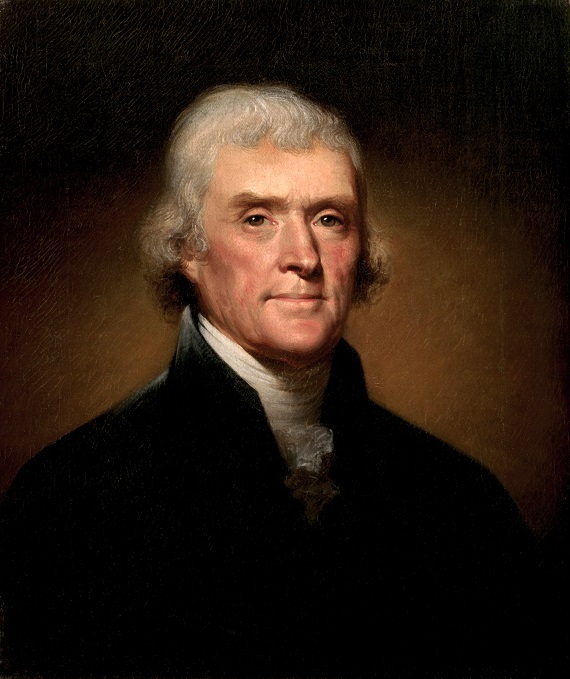
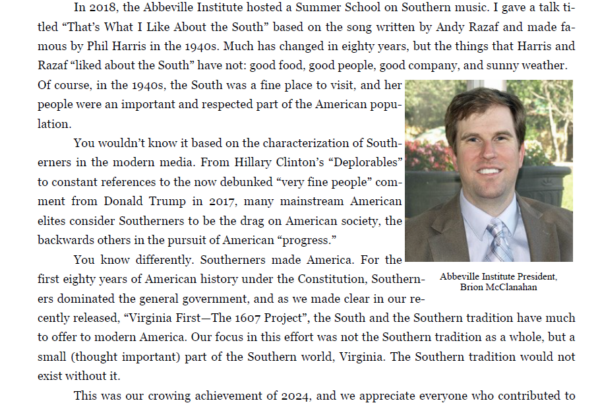
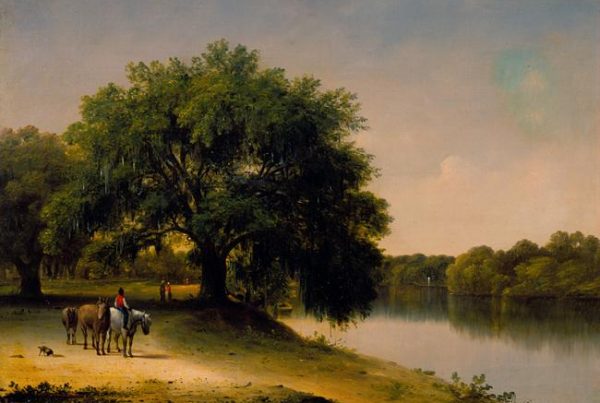
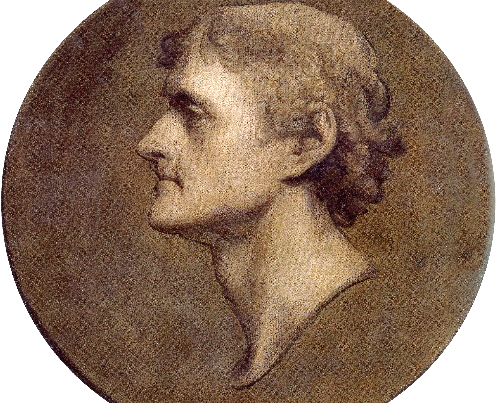

I think the writer means “populist” instead of “populous” in paragraph one and similarly “Populist” in the phrase “Populace Era” in paragraph 2.
“Populous” refers to a large or dense population.
“Populist” is a political term referring to a movement or historical period, which seems to fit the context in both cases.
And “populace” designates either the common people or a population.
Finally, “the enemy or your enemy is your friend”. Rather, “the enemy OF your enemy . . . .”
While Mr. Hubert’s comments seem correct and at least one citation (Eisenhower (1 p. 123)) I cannot source, I thank and congratulate you on a very fine article that connected many dots for me, praise undiminished by our comments.